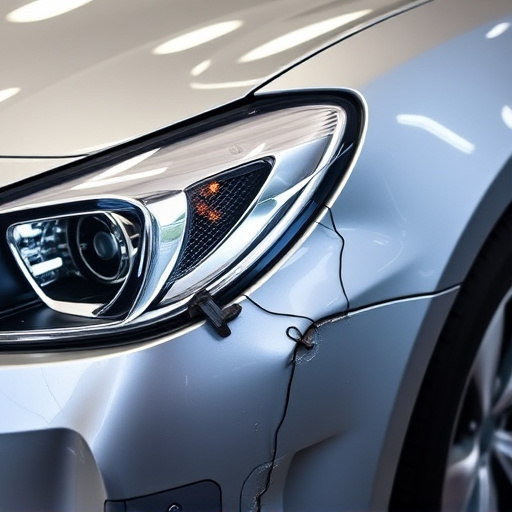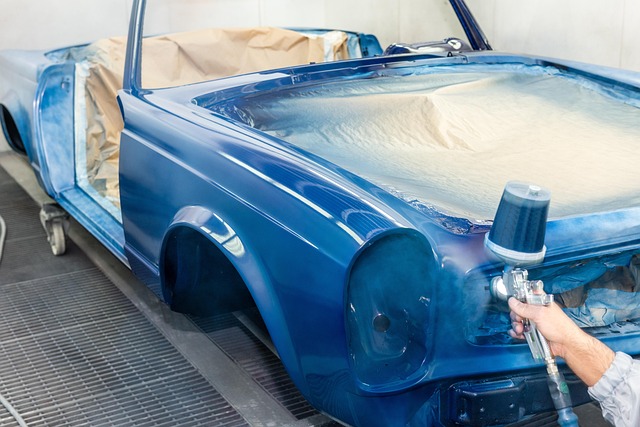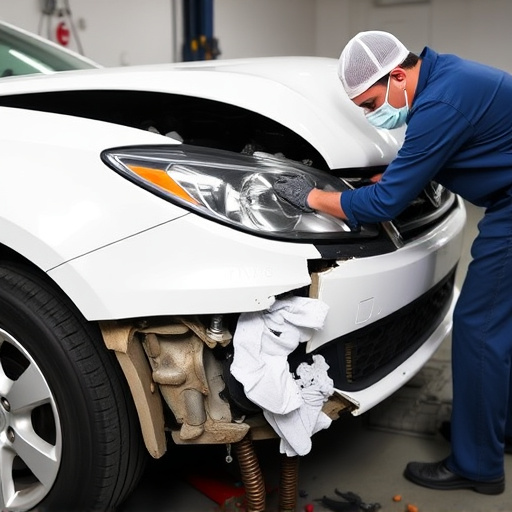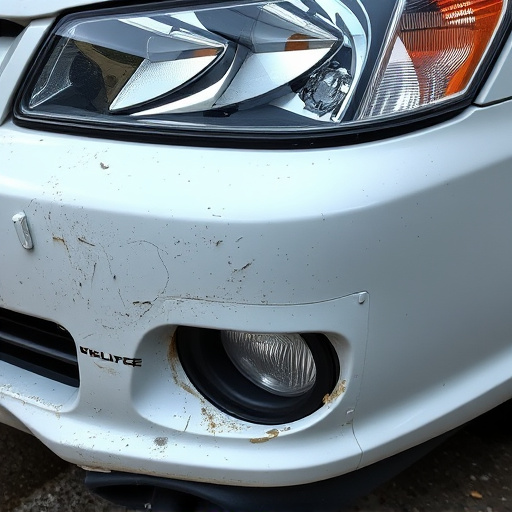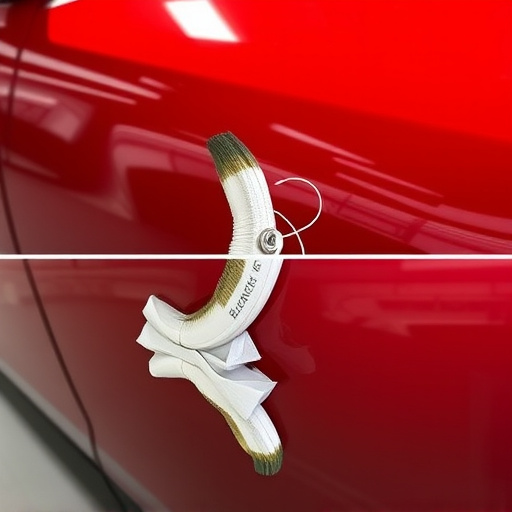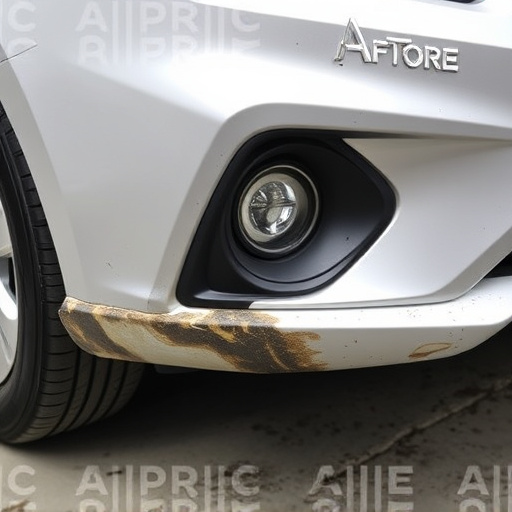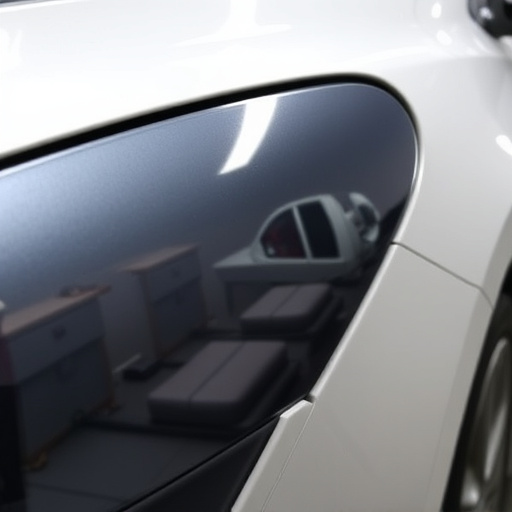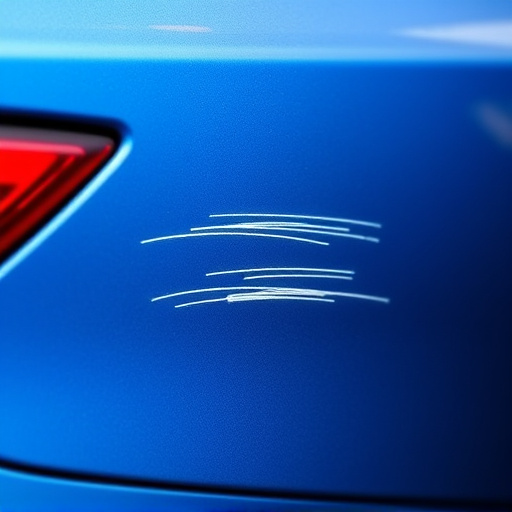Waterborne paint technology is revolutionizing auto body repairs by offering a sustainable, efficient, and high-performance alternative to solvent-based paints. Its key benefits include faster drying times, superior coverage, reduced material waste, and lower VOC emissions, leading to improved productivity, enhanced customer satisfaction, and a smaller environmental footprint. Adopting this innovative technology requires training and investment in specialized equipment, but it's crucial for auto technicians to stay competitive and meet the demands of a dynamic industry.
Waterborne paint technology is transforming the automotive industry, offering a more sustainable and efficient alternative to traditional coatings. This innovative approach, which uses water as a solvent instead of harmful chemicals, presents significant advantages for auto technicians. From improved application processes to enhanced color accuracy and reduced environmental impact, waterborne paints are revolutionizing automotive finishing. In this article, we explore why embracing this technology is crucial for technicians looking to stay ahead in the evolving automotive landscape.
- Understanding Waterborne Paint Technology: A New Era in Automotive Finishing
- Benefits for Auto Technicians: Improved Processes and Results
- Adopting the Future of Painting: Tips for Technicians to Stay Ahead
Understanding Waterborne Paint Technology: A New Era in Automotive Finishing

Waterborne paint technology is revolutionizing the automotive finishing industry, marking a significant shift from traditional solvent-based paints. This innovative approach involves using water as the primary solvent in the paint mixture, offering numerous benefits for auto technicians and vehicle owners alike. By embracing this new era of automotive finishing, technicians can expect improved work efficiency and enhanced environmental sustainability.
One of the key advantages is the reduced impact on health and safety compared to traditional methods. Waterborne paints significantly decrease the release of volatile organic compounds (VOCs), making them a safer choice for both workers and the environment. Moreover, these paints provide excellent coverage, superior flow, and fast drying times, streamlining the dent removal and auto body work processes in a vehicle body shop. This technology’s versatility allows technicians to achieve professional-looking finishes, ensuring vehicles not only look good but also withstand the test of time.
Benefits for Auto Technicians: Improved Processes and Results

Waterborne paint technology offers significant advantages for auto technicians working in vehicle body shops, enhancing both their processes and outcomes. One of the key benefits is improved efficiency. This advanced system allows for faster drying times compared to traditional paints, reducing the overall repair process. Auto dent repair and car damage repair can be completed more swiftly, which means vehicles are returned to their owners sooner, increasing customer satisfaction.
Furthermore, waterborne paints provide superior coverage and a more consistent finish. These eco-friendly paints offer excellent adhesion to various surfaces, ensuring long-lasting results. For auto technicians, this translates into less time spent on touch-ups and repairs due to blisters, runs, or uneven application—common issues with older paint technologies. The improved precision and reduced material waste contribute to a more streamlined workflow in the vehicle body shop.
Adopting the Future of Painting: Tips for Technicians to Stay Ahead

Adopting new technologies is essential for auto technicians to stay relevant and competitive in an evolving industry. Waterborne paint technology, for instance, is not just a trend but the future of painting in collision repair shops and vehicle restoration centers. This innovative approach offers numerous advantages over traditional methods, such as faster drying times, reduced odor, and improved environmental friendliness due to lower volatile organic compound (VOC) emissions.
To stay ahead, technicians should invest time in learning and understanding waterborne paint systems. This includes familiarizing themselves with the unique properties of water-based paints, proper application techniques, and advanced equipment required for efficient and precise painting. Staying informed about industry developments and attending workshops or training sessions can empower auto technicians to adapt quickly, ensuring their collision repair centers remain at the forefront of this game-changing technology in vehicle restoration.
Waterborne paint technology is transforming the automotive industry, offering auto technicians a cutting-edge approach to finishing. By embracing this innovative method, professionals can enhance their processes, achieve superior results, and stay ahead in a competitive market. The benefits are clear: improved environmental impact, reduced VOC emissions, faster drying times, and enhanced durability. Adopting these advancements allows technicians to provide customers with high-quality, long-lasting paint jobs while also contributing to a more sustainable future.

